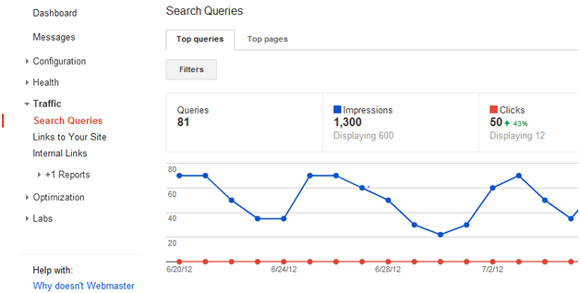Social Media, Pay Per Click, SEO… Where Does Your Brand Fit In?

by Aryeh Powers
There are many Internet channels available for marketing and advertising your brand. Unless your marketing is handled by an agency or you have a dedicated in-house marketing associate that sifts through every available Internet marketing medium, you’re probably getting frustrated with trying to make sense of the broad Internet marketing landscape. You might be really puzzled and frustrated by the lack of rules and structure that comes with Internet marketing or you might simply be having a hard time finding the right marketing medium and strategy for the distribution of ads and brand engagement across the various mediums.
Because I can relate to your frustration and because many of my clients have similar frustrations, I wanted to write an exhaustive post on ways for you to structure your Internet marketing priorities and goals and keep keep those manageable. Just a little disclaimer though… although, there are only 3 main sections to this post, it is exhaustive, so brace yourselves.
OK. So lets get started. The first thing I recommend for you to do in your search for better understanding the Internet marketing landscape, is to identify your competition and then commit yourself to looking at how they are conducting their Internet marketing in general (competitor analysis) and what they are doing right. Instead of trying to sift through piles of articles and books on Internet marketing and taking shots in the dark with your marketing budget, take a step back and look at what’s working for your competitors and learn from them.
In addition to conducting competitor analysis, it also pays to do a little bit of initial research to determine where your target audience is searching for brands like yours and which brands or personalities they are most engaged with. For instance, if you are the owner of a brand of healthy energy drinks and you have determined that your target audience is college students, then the next logical step is to determine both the shopping habits and online engagement habits of college students.
So with the overall concepts of competitor analysis and customer engagement under our belts, let’s look at some ways to help you conduct your initial research and tools to help you implement your marketing strategies:
Social Media:
Keeping a pulse on new social media platforms and social media best practices is becoming more and more difficult with the advent of so many new platforms. That’s why it’s essential to tackle this goal by creating a system by which you can consistently stay on top of what’s going on. As we alluded to above, the first thing you should do is list your top 5 competitors or top 5 brands that you feel relate to your product or service. Run a search on those names. See what social media platforms they are using and how they are engaging their customers. Listen and learn from your competitors. Take what they are doing right (e.g. posts, updates and sweepstakes that are garnering more social engagement) and make a note of it.
After you’ve checked out your competitors, you should then begin to look for social media trends in your particular industry. Try and search for what people are talking about. Some good tools to consider for your trend search are Twitter Search and the Google News search option by Google. Although the latter is not directly related to social media, you can nevertheless discover blog posts and look for Facebook likes, Twitter shares and other sharing trends on the news, which can be helpful in giving you ideas on what to write about and what people are interested in at that moment, based on viewer engagement.
See “6 Ways to Stay on Top of Social Media” from mashable.com and “How to find your company’s social media voice” from bizjournal.com.
Pay Per Click:
At this point you should guess where we’re going to start with researching pay per click strategies. That’s right, with competitor analysis. Again, find the Web site’s of the top 5 – 10 competitors of your brand. Right click and view the source code for those sites. Look at the meta keywords and title tags for their pages. Try and gather insight into why they have chosen the keywords and tags that they are using.
Next, use Google’s Keyword Tool and type in the keywords that you’ve found your competitors using (I’m assuming that you already have an AdWords account, which is really the first step in determining the best keywords to bid on). Look to see what the competition is like and look to see how many people in your geographic location are searching for those keywords. Find and isolate the keywords that work best with your budget (using the approximate CPC column) and keywords that have the most relevance to content on the landing page that you’re looking to bring visitors to.
Once you’ve determined the keywords that you’re interested in bidding on, think about which keywords you are currently being found with. To get that information, you will need to have an existing Google Webmasters Tool Account setup. Once you find and click on your Website’s profile, you will see the “Traffic” tab on the left. Click on the sub-tab for “Search Queries” underneath the “Traffic” tab to access the information you will need, to see which keywords you are leading to your Web site.
SEO:
The process of figuring out how to leverage SEO in the right way for your brand should start with you determining your Web site’s top 5 – 10 competitors. Right click and view the source code for those sites. Look at the meta keywords and title tags for their pages. Try and gather insight into why they have chosen the keywords and tags that they are using.
Next, look at the keywords that your competitors are using and see where those Web site’s rank for their respective search queries. To get started running your search queries against the keywords that you’re interested in, you can use the free version of Rank Tracker for basic results, which I recommend.
In addition to your competitors keywords, use the Google Keyword Tool to experiment with other keywords that your target audience would use to come to your brands Webs site.
Lastly, before you’re ready to move forward, you should consider using a tool with which to quantify your growth. The most basic tools for gauging your growth are both Google Analytics and the Google Webmasters Tool. Those 2 tools will enable you to see how many new visitors are coming to your Web site and which search queries are steering them to your site. For more advanced metrics by which to measure your Web site’s SEO growth, I recommend opensiteexplorer.org by SEOmoz. This tool gives you the basic breakdown of where your Web site is ranking in comparison to other Web sites and competitors for a variety of elements. They can throw a lot of information at you that you might not be familiar with, so be sure to click on the question mark icons to see what they mean.
Now that you’ve determined which keywords are viable for you to compete with and you have a way of monitoring your progress, you need to learn about what the different elements of how to go about doing SEO on your Web site. I hope to offer you more information on more of the practical ways to beginning doing SEO for your site in subsequent posts. For now though, you can check out searchengineland.com for tips, education and best strategies for accomplishing higher rankings for your Web site.
Tags: google adwords, google analytics, google webmasters tool, internet marketing, ppc, SEO, social media
<<Is Chick-Fil-A A Person Or A Brand? Self Promotion: Cool Or Not Cool?>>

